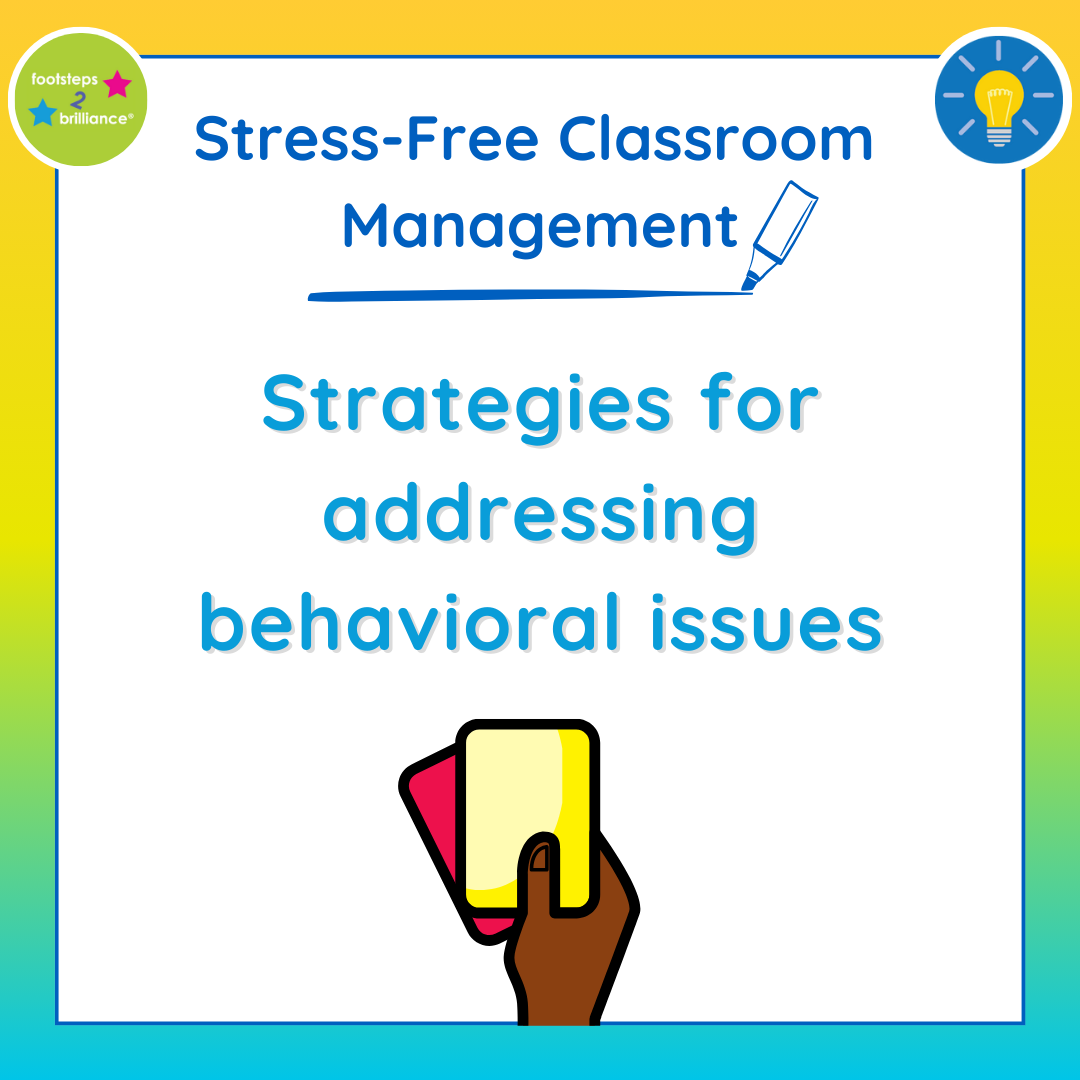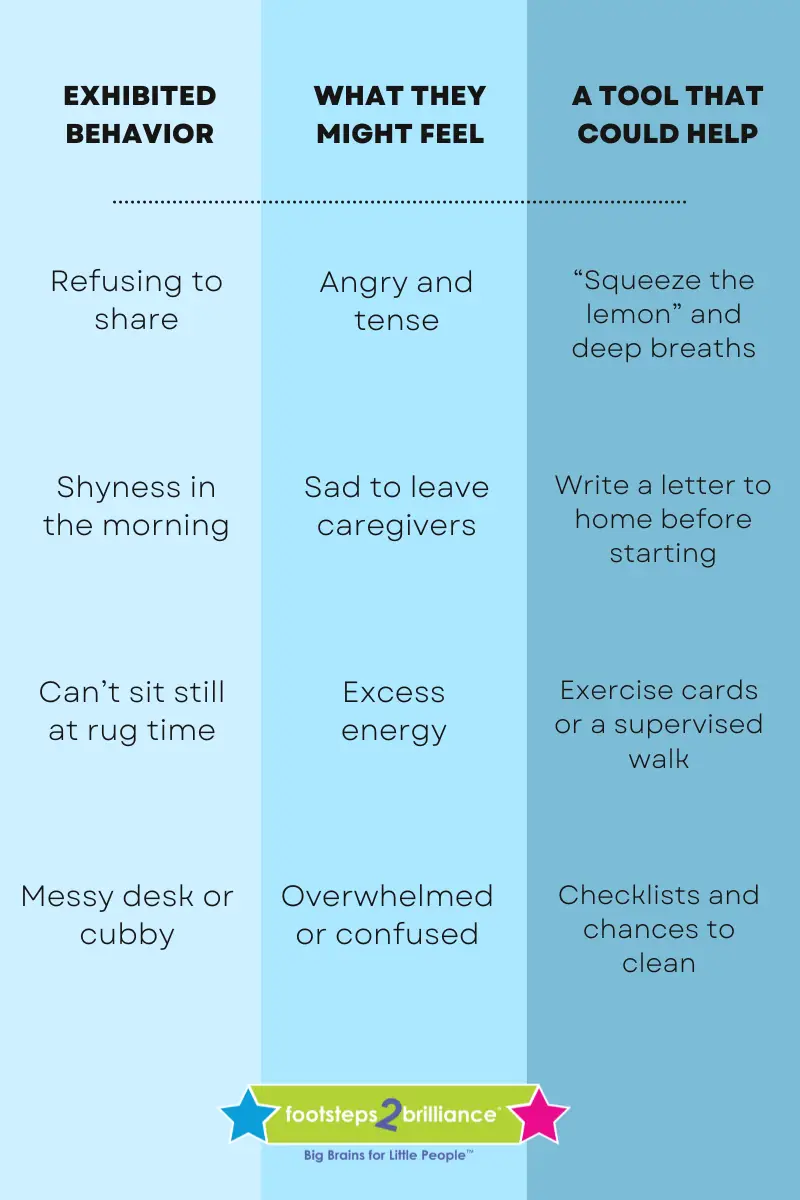
Classroom management doesn’t need to be stressful, and the best way to save your sanity throughout the year is to set up systems and routines right at the start of the school year, especially when it comes time to manage student behaviors.
Even with the best preventive measures, no school year will pass without its behavioral bumps. Even after you’ve created a welcoming environment and established routines and expectations, you will need to occasionally help students get back on track. Here are a few ways to address behaviors and get the job done as smoothly as possible.

It is always best practice to have preventive systems in place to curb student behaviors before they even begin. Here are some of our favorite preventive tools. Read on for tips on how to help get students back on track.
Help Students Help Themselves
Save time and stress by teaching social-emotional skills throughout the year, especially peaceful conflict resolution and self-regulation skills. If students are able to self-regulate in an age-appropriate way, they are often able to mitigate their own behaviors. Having tools available to help students work through their big feelings can help them reduce big behaviors. Calming corners, exercise cards, regulation zone signage, and activity sheets are all great options to have for students. As with any tool, you need to teach students explicitly how to use them. This investment will save you both time and stress down the line.
Similarly, take time to teach students how to resolve conflicts peacefully, emphasizing the importance of empathy and compromise.
Sort the Mountains from the Molehills
One of the biggest tools a teacher can use in dealing with student behaviors is sorting the mountains from the molehills. Sometimes the best way to address a behavior is with a gentle reminder, a nudge in the right direction. It takes time and varies class to class, but learning to pick your battles with student behavior will help in the long run. You can also implement a warning system (think traffic light) to prevent molehills from turning into mountains.
Rethink Prizes and Rewards
Whole-class incentive-based systems are often excellent ways to reinforce positive behavior instead of punishing unexpected behavior. There are lots of ways to do this indirectly so that students are motivated in the long term by intrinsic factors, not just behaving well for a prize. One way is to try punch cards like you see at local businesses (“Buy 10, get 1 free,” for example). After 10 instances of unprompted expected behavior or kindness, the student gets to pick from a prize bin. Be sure to let the student know that they’ve earned a notch towards the prize so they associate their behavior with the positive outcome.
Helping Students Get Back on Track
Even with the best preventive measures, no one is perfect! Here are some strategies to address student behaviors if they do arise
Start firm. One big mistake I made in my first year of teaching was not establishing a firm, consistent consequence system early on. My students loved me, but when it came time to dole out consequences, I found they had a hard time taking me seriously. My second year, I started with a kind but firm hand. Once the year wore on and trust had been established, I was able to lighten up while still being taken seriously.
Ensure that consequences are fair, consistent, and directly related to the behavior in question. Make sure students know what the consequences of their behavior will be so that they are not surprised.
Absolutely avoid using punishments that humiliate or belittle students. Don’t play favorites; consequences must be consistent across students.
Importantly: always be prepared to follow through with consequences when necessary. Your authority is only as good as your follow through. If students who are struggling with expected behavior see that you’re all talk, there won’t be anything to deter them from future behaviors.
Consider consequences as opportunities for learning. Discuss with students why certain behaviors are problematic and what they can do differently in the future. Give them room and tools to reflect instead of simply shutting down the behavior with no explanation. Calming corners, regulation zones, and meditation stations can be a first step before a more serious consequence like caregiver contact or loss of privileges is taken.
Keep records of behavioral incidents and the actions taken. This documentation can be valuable for discussions with caregivers or for identifying patterns in a student’s behavior. Once it’s time to talk to caregivers about their student’s behavior, use these tips to make the conversation smooth and productive.
Classroom management is a year-long endeavor. Starting the year strong with preventive measures and the ability to follow through with logical consequences will help save you headaches all year long.
Next post in the Stress-Free Classroom Management series: Maintaining Routines and Procedures






